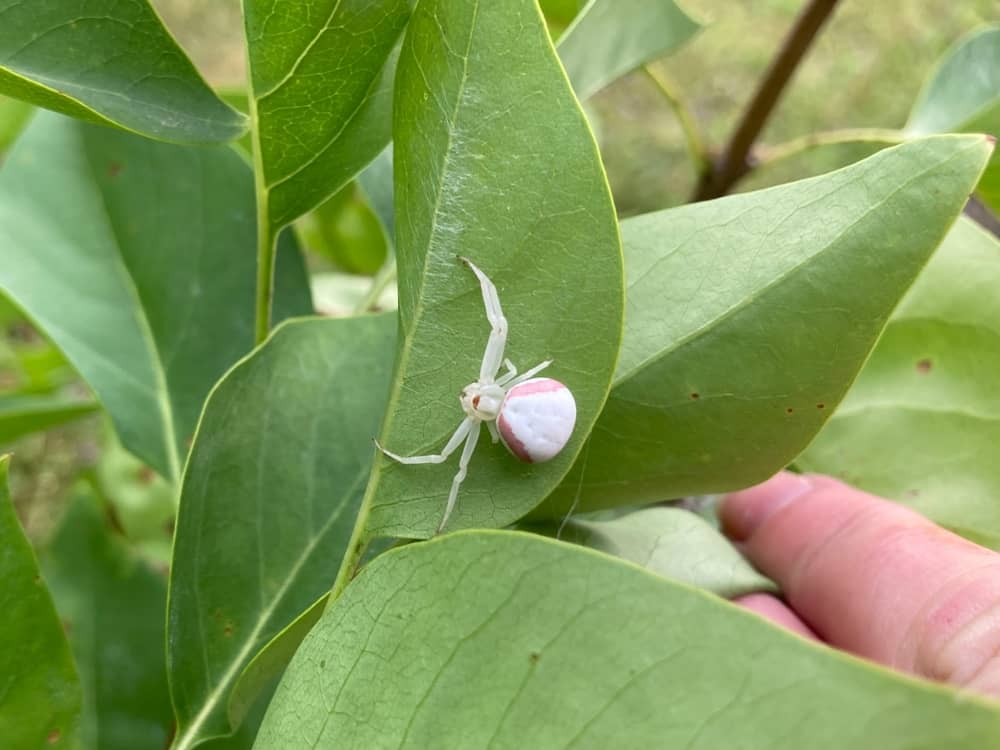When people think of seeing spiders in the house, they tend to assume the spider may be black or brown. However, this isn’t always the case. You might find white spiders lurking on your houseplants, ceiling, or cabinets. Scary, right?
Well, kind of? Spiders can be quite scary because we’re all afraid of getting bites from them. They’re also unsettling to look at. However, most are friends of humanity because they view the type of insects we hate as prey.
Unlike black widow spiders, you don’t have to worry about most white spiders. These spiders rarely bite, though they can be a nuisance. Even so, you might be curious about what that white spider in your home is. Let’s take a look at the most common types.
Types Of White Spiders In Homes
Before you panic, check out our guide on white spider species.
1. Crab Spiders
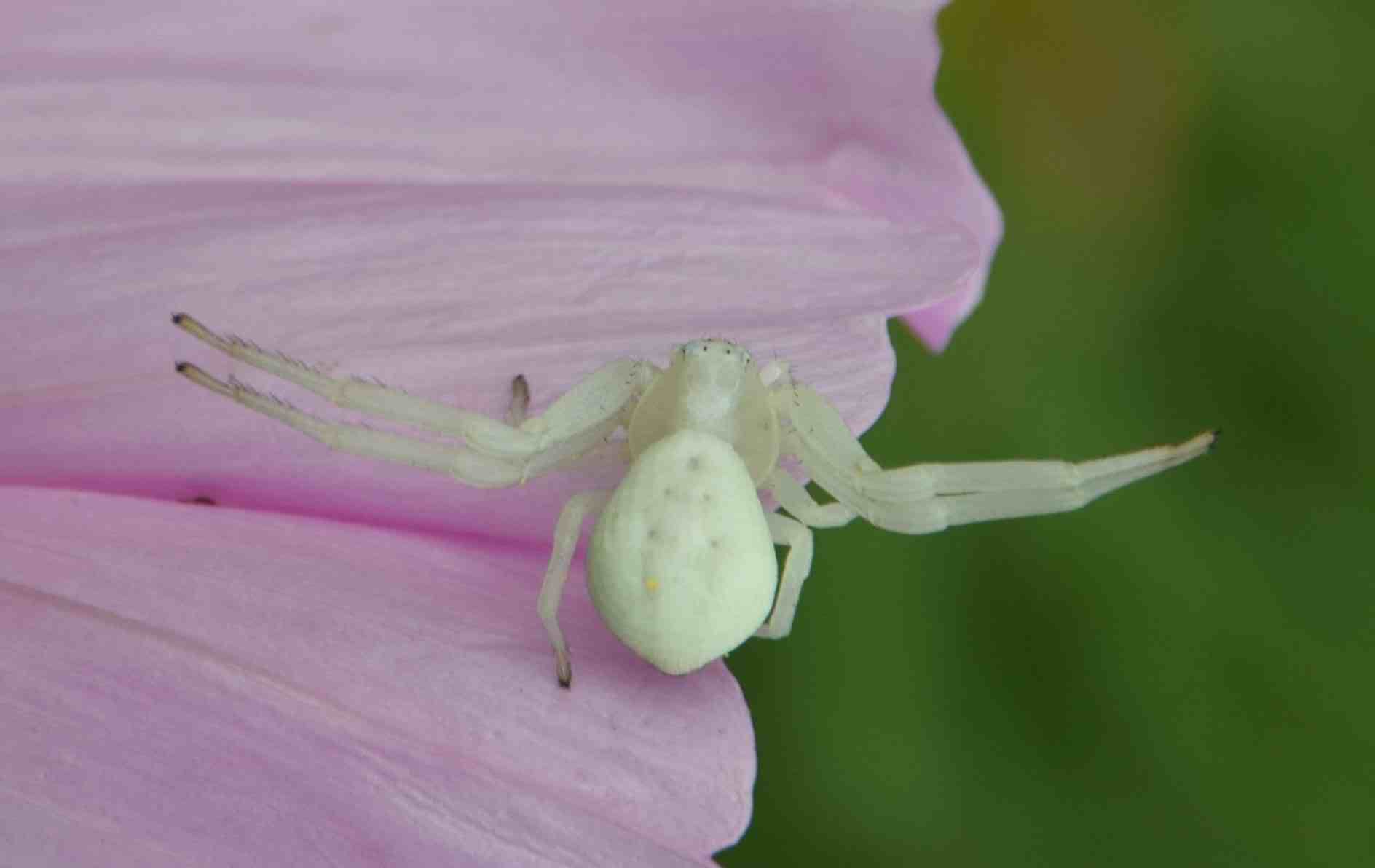
Credit: the biking gardener
Crab spiders are a large family of small spider species that are noted for their crab-like appearance. They have all-white bodies with bulbous abdomen, and thin legs that peek out in a way similar to the way hermit crabs do.
There are several different subspecies, including the Caribbean Crab Spider, Goldenrod Crab Spider, and White Crab Spider. All of them are fairly harmless, though they love to startle you in cellars. They typically nest in plants, which is how they find themselves inside their homes.
Crab spiders are generally under 1.2 inches in leg span, making them fairly small. They don’t bite, so just leave them be.
2. Jumping Spiders
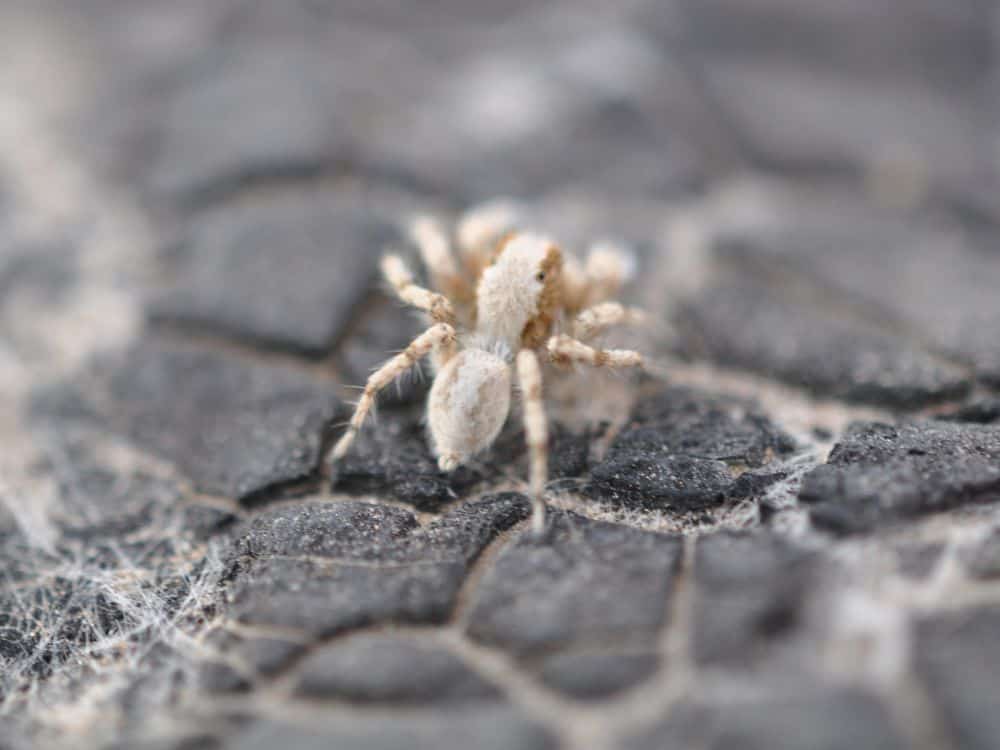
As the name suggests, these spiders are not an arachnophobe’s best friend. Both males and females can jump on you. Most jumping spiders are brown or even black, but it’s possible to see these in pale shades, too. This is a large category of spider species.
They don’t spin webs or use much silk, so if you have cobwebs, it’s not a jumping spider. They tend to prefer hiding in shoes or drawers. They, like crab spiders, are harmless and even beneficial.
3. Yellow Sac Spiders/White Sac Spiders
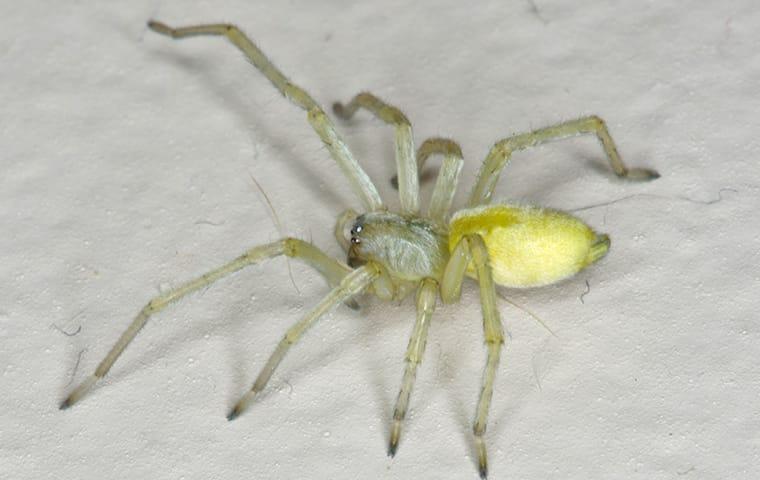
Credit: heritagepestcontrolnj
Yellow Sac Spiders are one of many species of sac spiders to make this list. Their legs are golden yellow, and their centers are pale yellow with white specks. They tend to be mistaken for White Sac Spiders, which are basically the same spider with different coloration.
This is one of the only house spider species to actually have a spider’s bite that you may want to avoid. A bite from sac spiders will contain mild (but painful) venom that causes swelling, pain, and other mildly uncomfortable symptoms.
Sac spiders use their silk to create tubular webs that they hide in. They make their habitat in leaves outdoors. In homes, they often opt for wood piles, cracks in the wall, and basements. At times, they may also hide near ceilings.
Yellow Sac Spiders are the more aggressive of the two, and will likely bite if you get near their silken retreat. White Sac Spiders are a little more friendly. Both are active hunters, and neither will hurt you too badly. Their bites are painful, but they won’t actually harm you.
4. White Cobweb Spiders
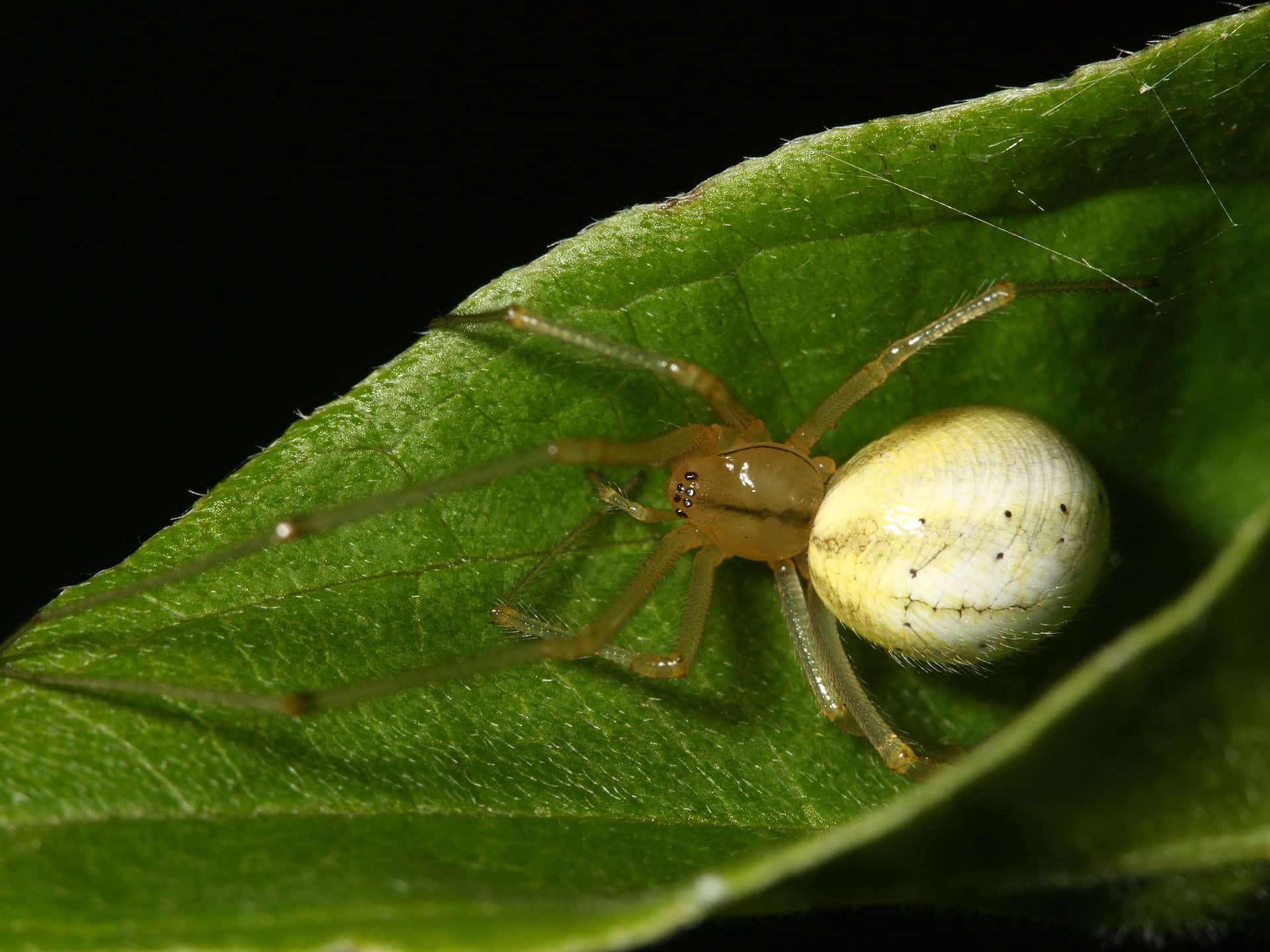
Credit: Wikipedia
Do you see a tiny white spider weaving a large cobweb in the corner of your home? There’s a good chance that you have white cobweb spiders. These tiny white spiders are a lot like house spiders, especially since they tend to build webs near windows like them.
White cobweb spiders are very, very small. They’re ghostly white and have round, almost circular bodies. They also tend to measure under 1/4 inch in size. So, if you see them, you’ll probably think they’re babies. (Nope, they’re fully grown.)
If you live in a dry area like Nevada or Arizona, you probably are going to see cobweb spiders sneak into your home. They’re one of the most common types of house spiders in America.
5. White Cellar Spiders
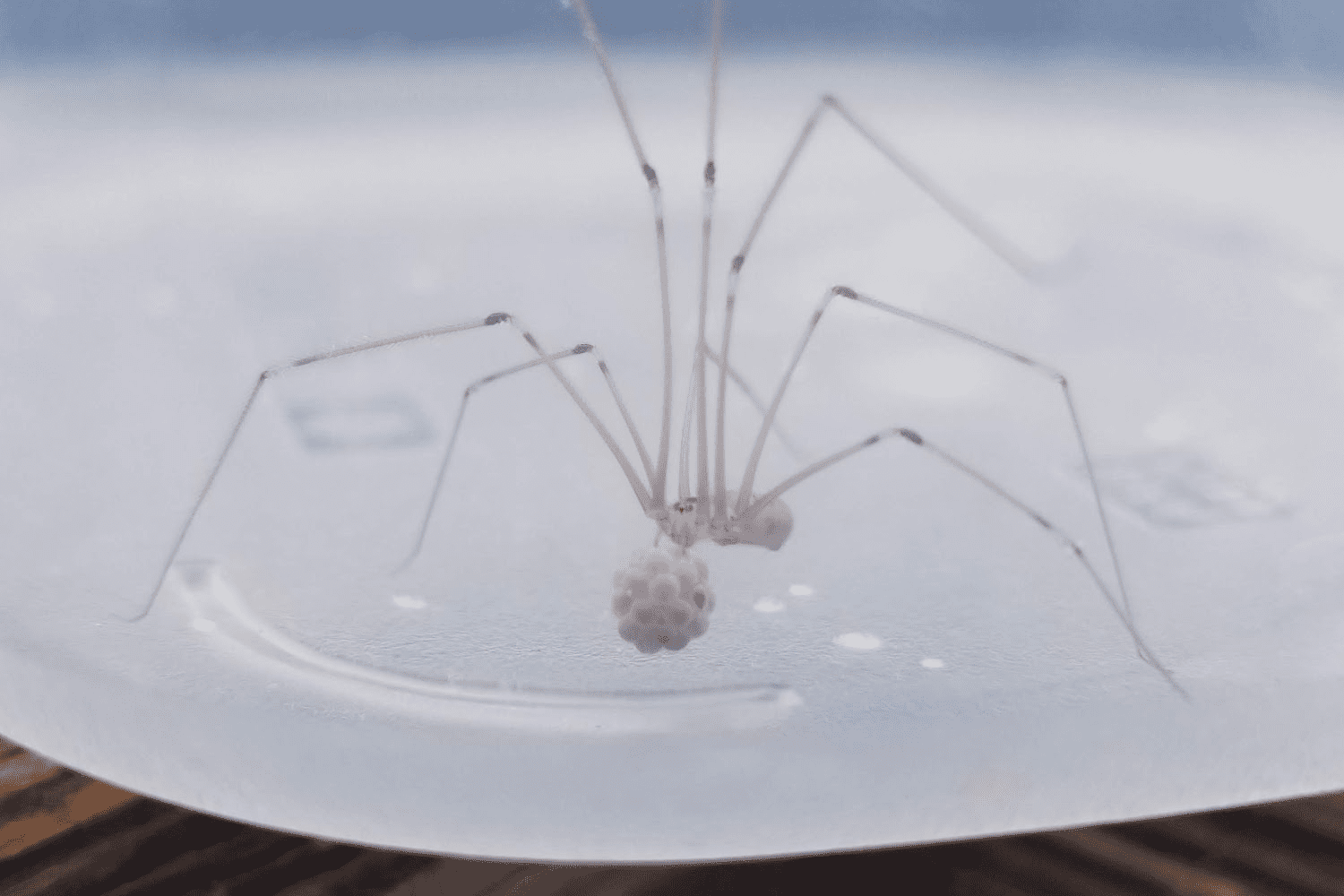
Credit: reddit
Often confused with cobweb spiders, White Cellar Spiders are known for their small round bodies paired with long, spindly legs. They’re a bit larger than cobweb spiders, with legs growing to 1/4 inch long each.
You might hear them called “Daddy Long-legs” because of the long length of their legs. However, they aren’t actually “Daddy Long-legs” spiders. They’re far smaller and aren’t even the same species.
As the name suggests, these petite creepy crawlies tend to prefer basement crawlspaces, cellars, and other cool, damp areas.
6. White Widows
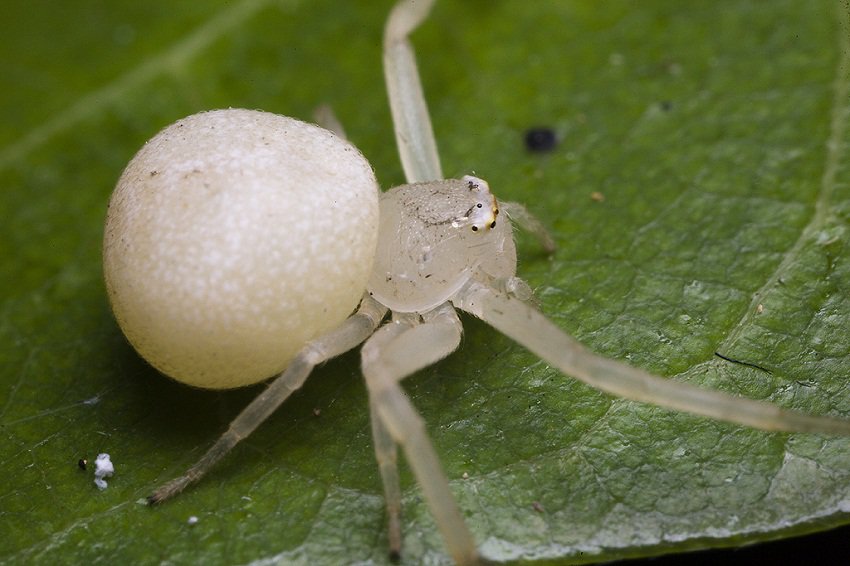
Credit: spider identifications
Most people are aware of black widow spiders, the ones that are deadly and black and have a red hourglass on their backs. What you may not be aware of is that there is a white version of this potentially lethal spider. It’s called a White Widow.
These spiders are fairly rare in the wild, and even rarer in the home. However, they occasionally will find their way in. At around 1/2 inch in size, they are mostly known for their tan-white bulbous bodies. They do not have an hourglass on their back.
White Widows are not as venomous as their darker counterparts, but you should still exercise caution. Their bites are very painful and can cause serious adverse reactions in children. If you believe your child was bitten by one, seek medical attention immediately.
7. Ghost Spiders
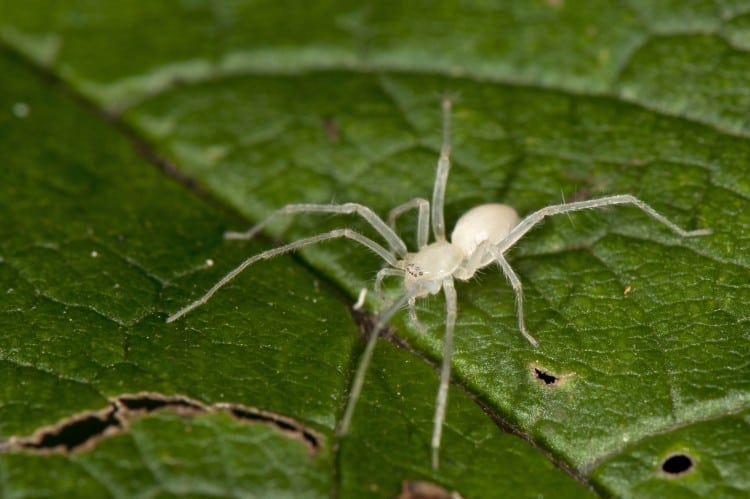
Credit: spidersinohio
Ooh, now this is a spooky name! These tiny spiders are either pale white or pale yellow, giving them a ghostly look. As one of the more common types of white spiders in houses, they are actually fairly benign. They don’t bite people. Heck, they don’t even spin regular cobwebs.
Rather, ghost spiders tend to make funnel webs that they use to attack and hunt bees and wasps. Because they can help prevent or even remove the start of a bug infestation, it’s often best to let these spiders be. Besides, they’re really small and hard to spot.
Ghost spiders are excellent runners, so it will be hard to chase them down once you spot them. They typically hide and nest in houseplants.
8. White Candy Striped Spiders
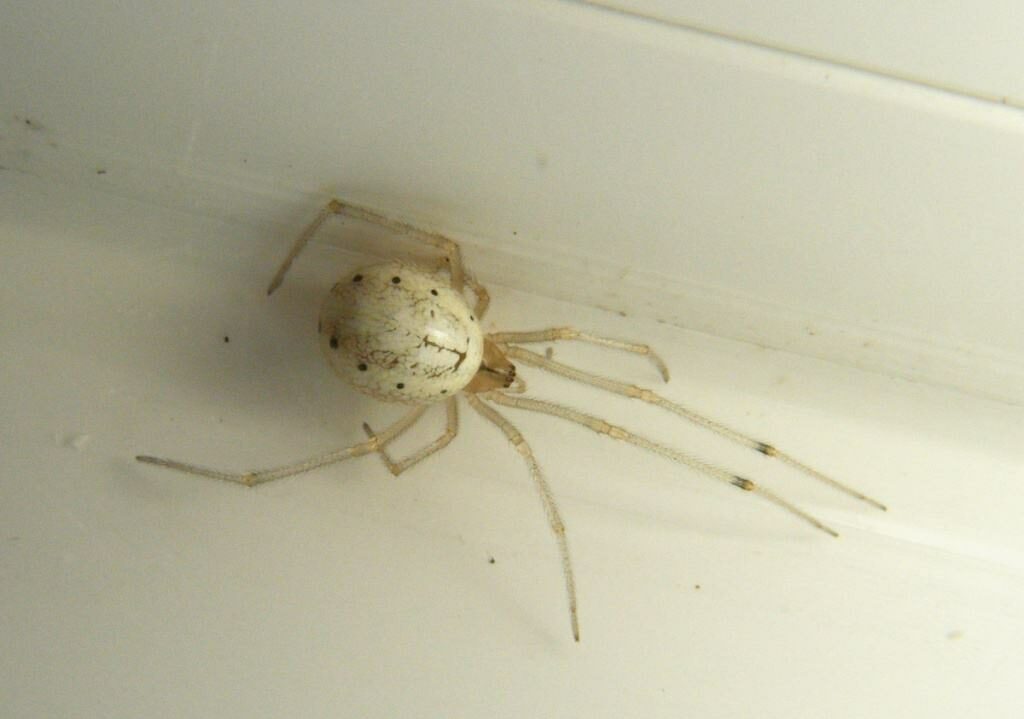
Credit: naturespot
If you see a white spider that has a colorful “V” on its abdomen, then chances are that you are looking at a Candy Striped Spider. These spiders are known for having two stripes in a “V” formation on their thorax, most commonly in red or pale green.
They have long legs that make them excellent climbers. Unlike most other spiders that have bold colors like red and pink, White Candy Striped Spiders are not venomous towards people. All they want to do is hang out on plants and hunt their prey.
Should you call an exterminator if you see a bunch of white spiders in your home?
In most cases, you shouldn’t have to worry about getting a professional to get rid of spiders in your home. Most of the time, cleaning up your closets and storage areas will be enough to prevent them from making a permanent home in your house.
Actually, keeping your leaf litter to minimum is usually enough to make spiders avoid your home altogether. If you see a couple of spiders lurking in your house, they’re usually there because they are hunting flies and other bad influences.
Of course, there are going to be moments when spiders can become a major issue or a sign of something worse. Here’s when it may make sense for you to call a pro:
- You’re dealing with a highly venomous spider infestation. For example, if you spotted a bunch of white widows, you may want to hire a professional to get rid of them. These can be a risk to your health as well as the health of others in your vicinity.
- The spiders are not the only issue you’re having with pests. If you have a bed bug or fly problem, spiders will often come along and eat them. Spiders go to pest-heavy homes because that’s a source of food for them.
- You’re actually alarmed by the number of spiders you’re seeing at home. One or two spiders in a home are normal. Seeing 50 to 100 is not. If you’re seeing that many spiders, you probably should call a professional exterminator.
In conclusion…
Many white spiders could be lurking in your house, but most are friendly. If you notice venomous spiders increasing in your home or a large influx of pests, that may be the only time to call an exterminator.
At the end of the day, most spiders are more benevolent than they are malevolent. So, while they may be annoying, it doesn’t make sense to try to go on a rampage trying to hurt them. They’re helpers.
